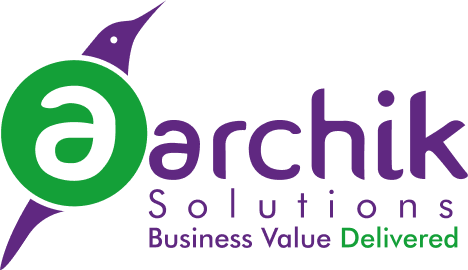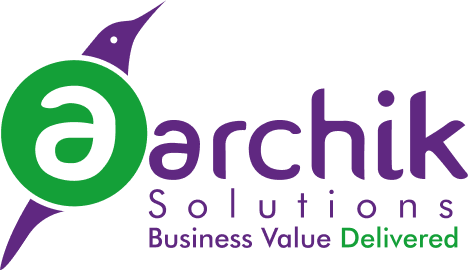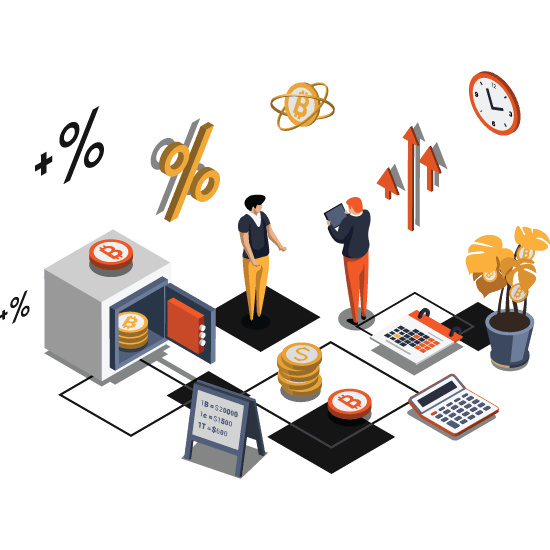What’s in a DEFI After All?
What's in a DEFI After All?
What's in a DEFI After All?
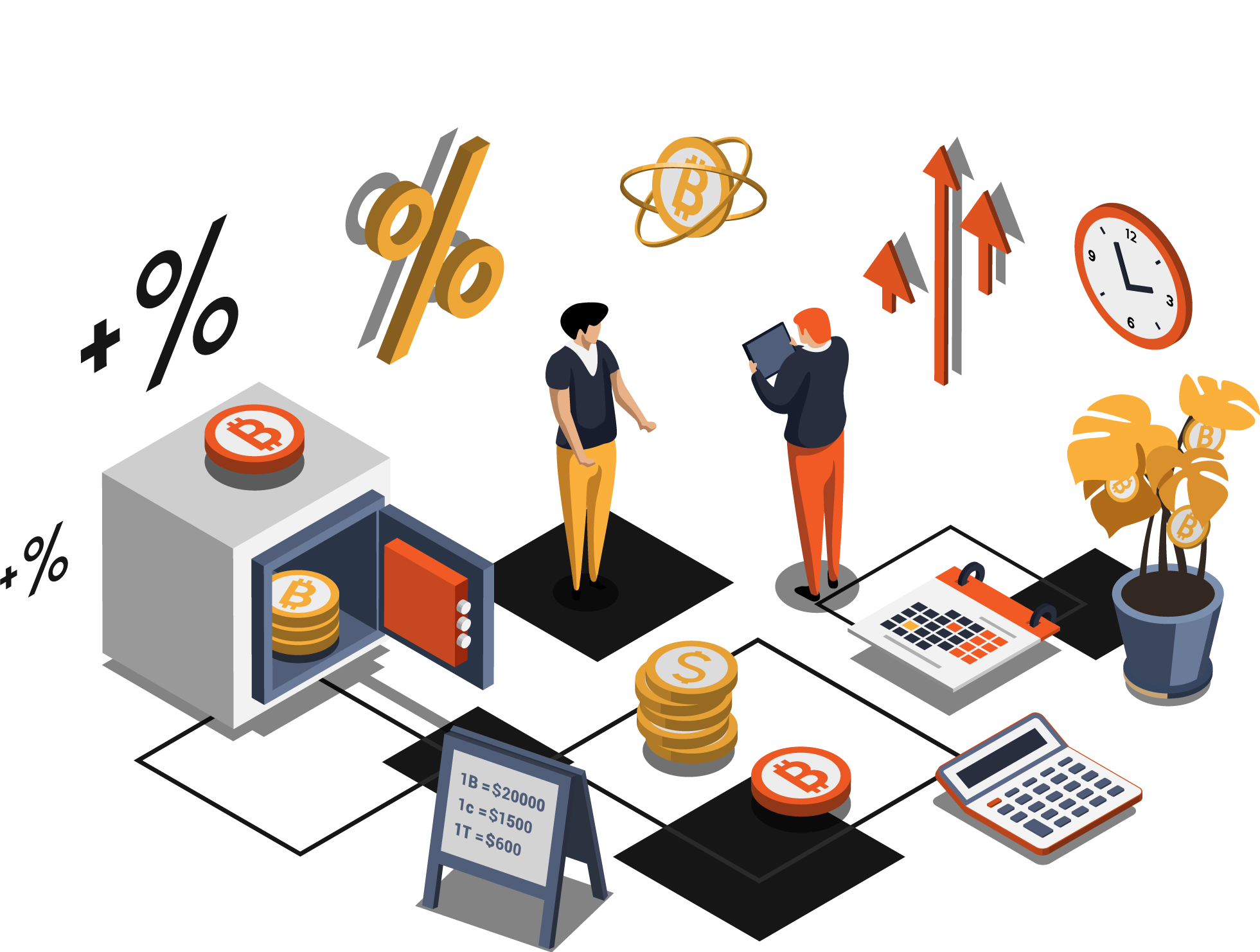
Overview
DEFI apps are going mainstream en masse. Let us look at some statistics to understand how DEFI applications are growing by leaps and bounds.
- Decentralized protocols grew by 650% to $150 billion in 2021
- The total value locked (TLV) grew by 1,120%
- There is around $38 billion of value locked in Defi.
- The worldwide blockchain market is forecast to grow to over $65 billion by 2026.
- Bitcoin has a market cap of around $800 billion.
- Global blockchain spending is expected to hit $19 billion by 2024.
Without a doubt, Defi is the key driver of disruption for blockchain technology. As the financial world is going through this rapid transformation caused by Defi, it is high time you looked for new opportunities.
So you start wondering, what is DEFI after all?
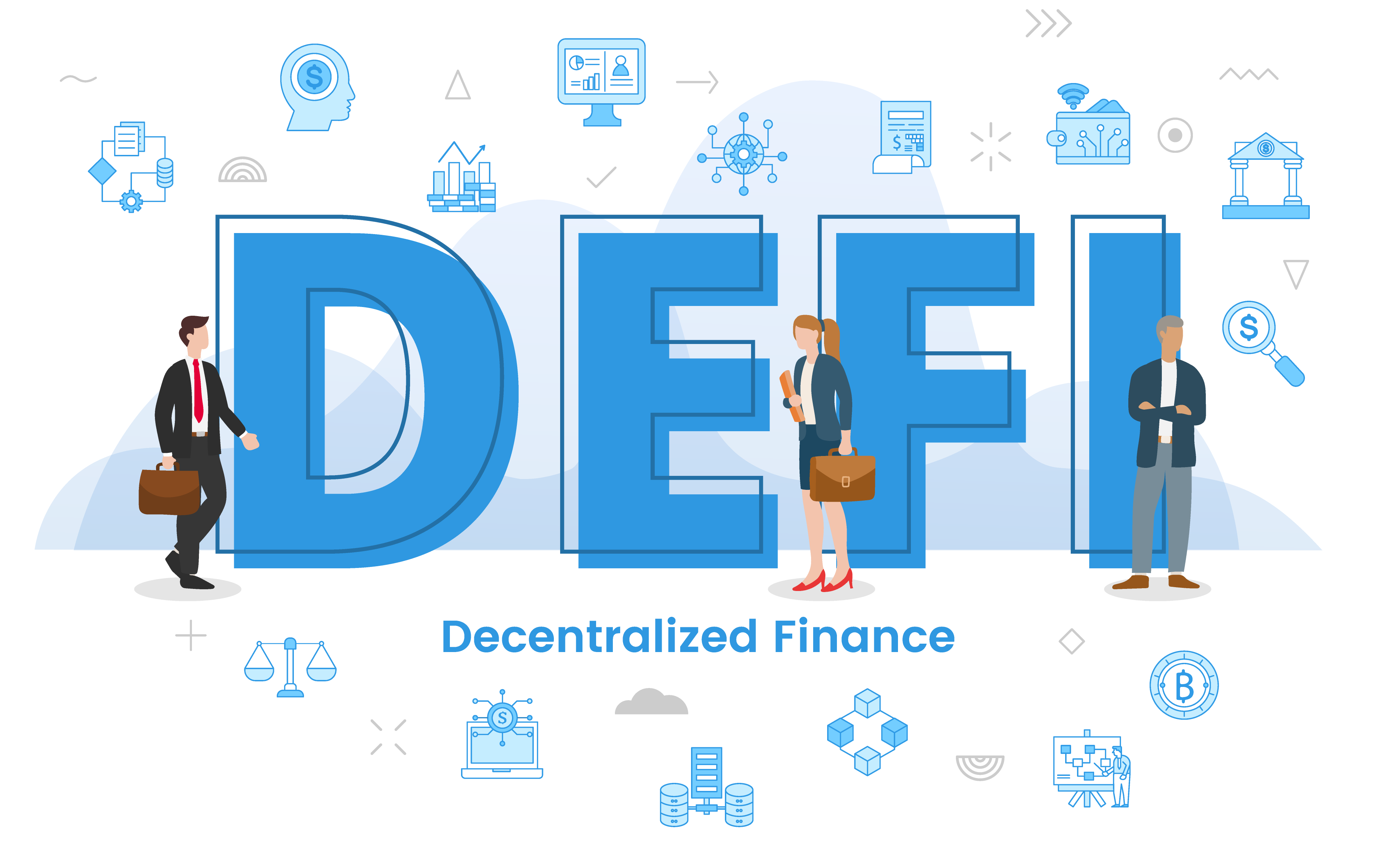
What’s A DEFI – The Definition
DeFi (or defi) simply means decentralized finance and describes any blockchain software that has to do with finances. Decentralized finance (DeFi) refers to an alternate finance system that uses public blockchain technology for performing all kinds of financial activities. The core purpose of DeFi is to offer a viable alternative solution to the centralized middleman-focused legacy system.
How is it better than a centralized exchange?
In the traditional financial system, the participating parties rely on banks, brokerages, or other financial organizations for financial structures. Moreover, centralized entities have complete control over the entire financial system. These issues act as buffers that impact the transaction speed and cost — leading to dissatisfaction among the parties in the financial system. DeFi challenges this centralized financial system by empowering individuals with peer-to-peer digital exchanges. DeFi eliminates the fees that banks and other financial companies charge for using their services. Individuals hold money in a secure digital wallet, can transfer funds in minutes, and anyone with an internet connection can use DeFi.
Wherever there is an internet connection, individuals can lend, trade, and borrow using software that records and verifies financial actions in distributed financial databases. A distributed database is accessible across various locations as it collects and aggregates data from all users and uses a consensus mechanism to verify it.
Derivatives and Synthetic Assets
Smart contracts allow the creation of tokenized derivatives and it has become one of the most unique DeFi use cases. Tokenizing a derivative means setting the value of a contract based on an underlying financial asset or a set of assets. This underlying financial asset works like a traditional security, meaning it could include — bonds, fiat currencies, commodities, market indexes, interest rates, or stock prices.
P2P Borrowing and Lending
As DeFi is saying goodbye to the traditional banking systems, a vacuum for the borrowing and lending market has emerged. So, borrowing and lending protocol is one of the vital DeFi use cases. DeFi ecosystem is more suitable for peer-to-peer (P2P) borrowing and lending efforts. Multiple DeFi projects have already entered the market focusing on this particular use case.

Derivatives and Synthetic Assets
Smart contracts allow the creation of tokenized derivatives and it has become one of the most unique DeFi use cases. Tokenizing a derivative means setting the value of a contract based on an underlying financial asset or a set of assets. This underlying financial asset works like a traditional security, meaning it could include — bonds, fiat currencies, commodities, market indexes, interest rates, or stock prices.
P2P Borrowing and Lending
As DeFi is saying goodbye to the traditional banking systems, a vacuum for the borrowing and lending market has emerged. So, borrowing and lending protocol is one of the vital DeFi use cases. DeFi ecosystem is more suitable for peer-to-peer (P2P) borrowing and lending efforts. Multiple DeFi projects have already entered the market focusing on this particular use case.
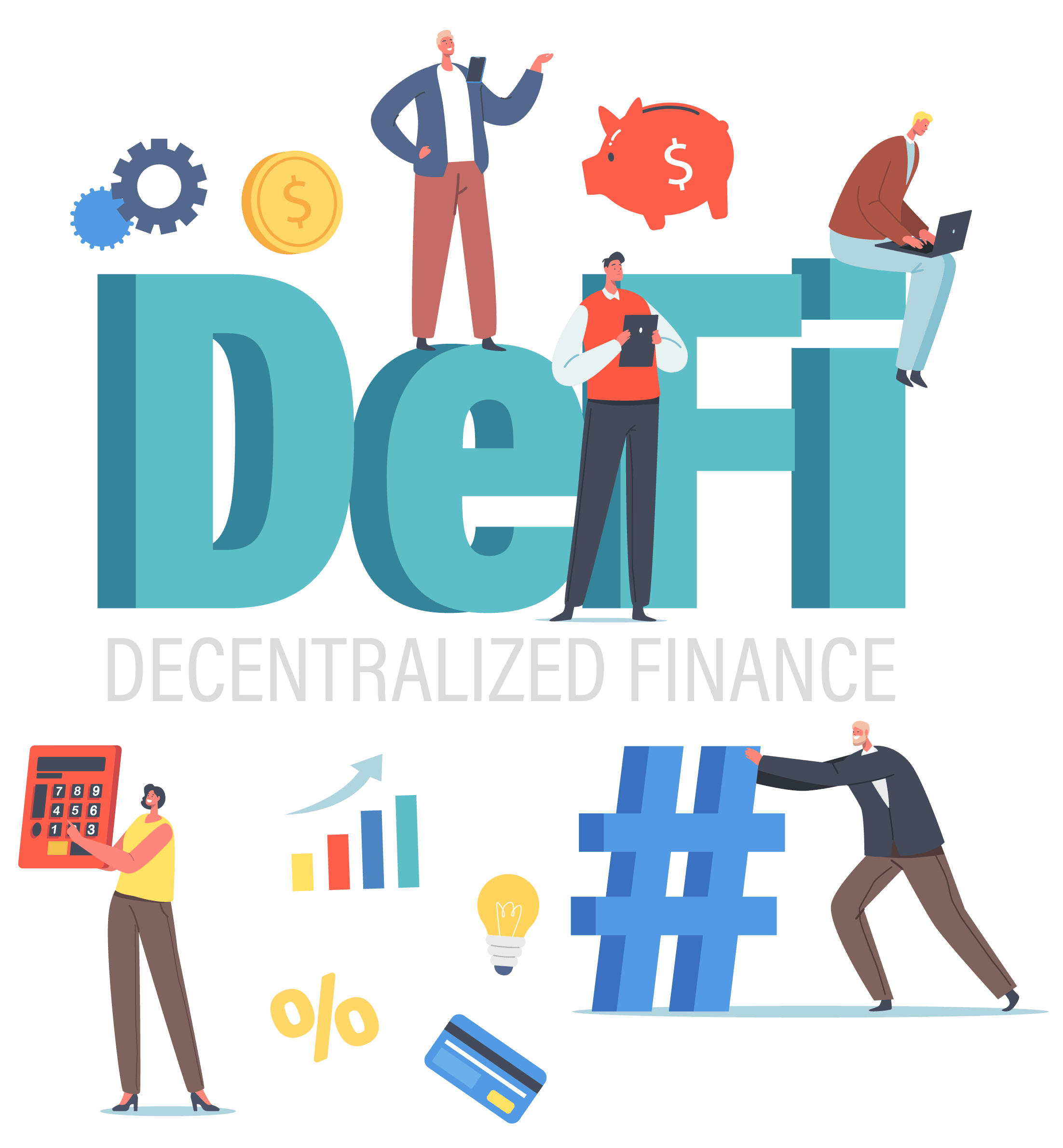
Use Cases of DEFI
Hence, now that we have a clear vision as to how a DEFI app can help us, we would wonder what are the most popular use cases of DEFI prevalent today. Some of the most popular implementations of DEFI which we find today are as follows :
01
DEX :
DEXs or simply swaps are by far the most popular defi applications right now. Decentralized exchanges can give newer meaning to the trading activities in the DeFi ecosystem, being one of the more impactful DeFi use cases. As there is no central authority on the commanding position, there is no risk of asset manipulation or market manipulation. Plus, decentralized exchanges offer lower exchange fees, faster settlement, and complete control over their digital assets through blockchain digital transformation.
02
NFTs
Minting, selling, and (lately even) trading digital objects of art have become the latest crypto craze.
03
Decentralized Autonomous Organizations or DAOs :
The DAOs are the counterpart of centralized financial organizations in DeFi — making it one of the pillars of decentralized finance use cases. The Ethereum blockchain ecosystem introduced decentralized organizations to serve the same goals. However, DAOs are by nature decentralized and don’t adhere to the boundaries imposed by central governments or authorities.y.
How is a DEFI Implemented?
So all of these use cases sound very interesting. Hence, you may wonder what goes into building a DEFI App? Any DEFI App would have the following essentials at its core :
So all of these use cases sound very interesting. Hence, you may wonder what goes into building a DEFI App? Any DEFI App would have the following essentials at its core :
- Blockchain Technology on which it will run
- Business Logic or Tokenomics propagation via smart contracts
- Intelligent and responsive UI/UX
- Connects with crypto wallets
- Protocols for off-chain interaction if needed
On the development floor , the process in a broad sense will require the following considerations to be explored :
On the development floor , the process in a broad sense will require the following considerations to be explored :
- What Blockchain to be used?
- Define Tokenomics
- Level of Decentralization to be used
- Which Crypto Wallets are to be integrated?
- Which oracles (data feeds) are to be used for off-chain interaction?
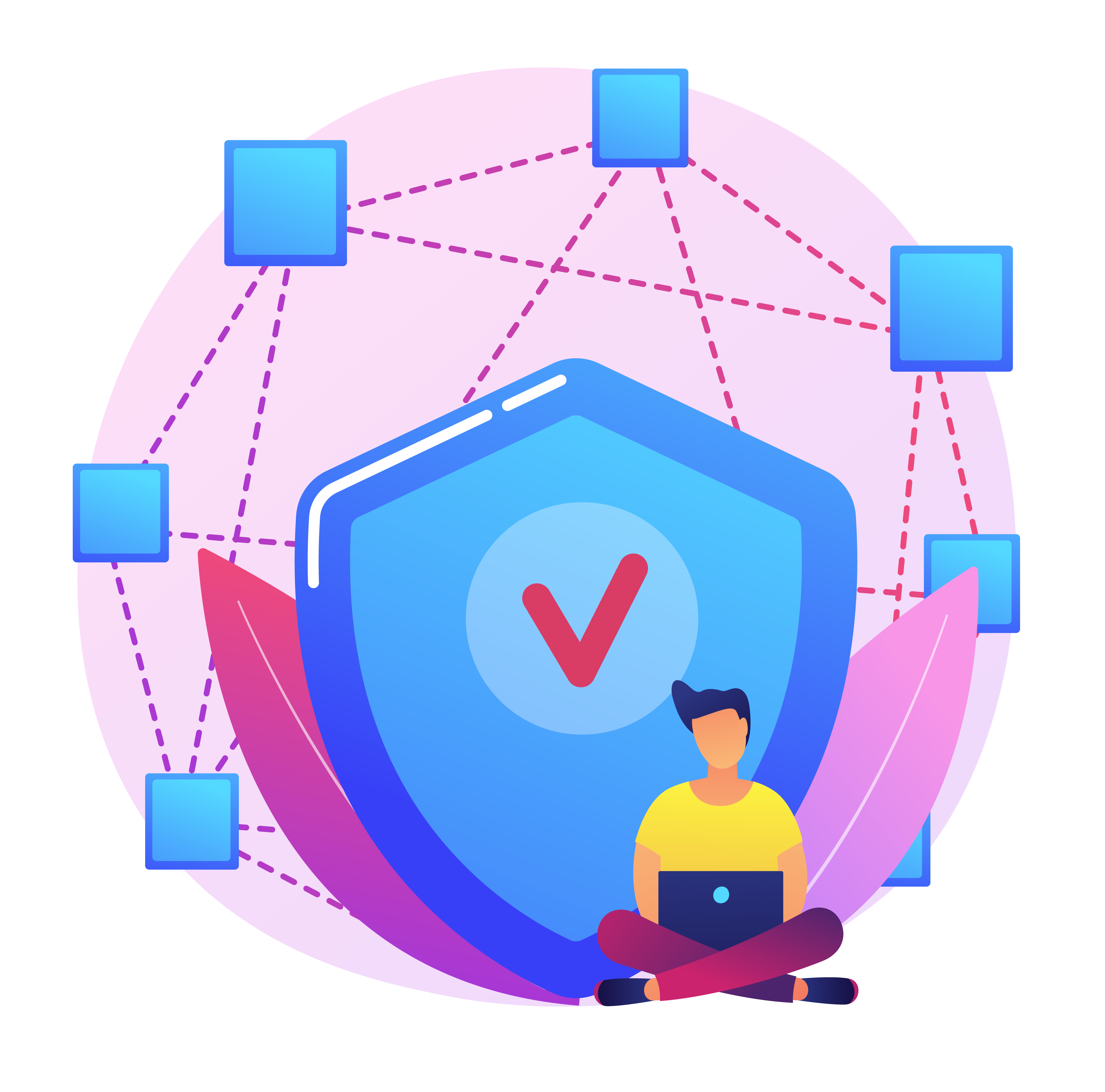
Conclusion
Decentralized finance (DeFi) is an emerging financial technology that challenges the current centralized banking system. DeFi eliminates the fees that banks and other financial companies charge for using their services and promotes the use of peer-to-peer, or P2P, transactions.
Our Implementation
Our Implementation
At AARCHIK we implemented a copy-trading solution on Binance wherein different users subscribed to the service and based on the daily movement of the different cryptocurrencies, trading was done. Based on the trades carried out, the users were asked via a bot if they wanted the trades to be replicated and a bot was used to replicate the trade. You can read more on the case study here : https://aarchik.com/portfolio-item/blockchain-based-defi-application/
Have an Inquiry?

Sunil P
Sunil is an avid Web 3.0 technology evangelist and heads the front end practice at AARCHIK Solutions


